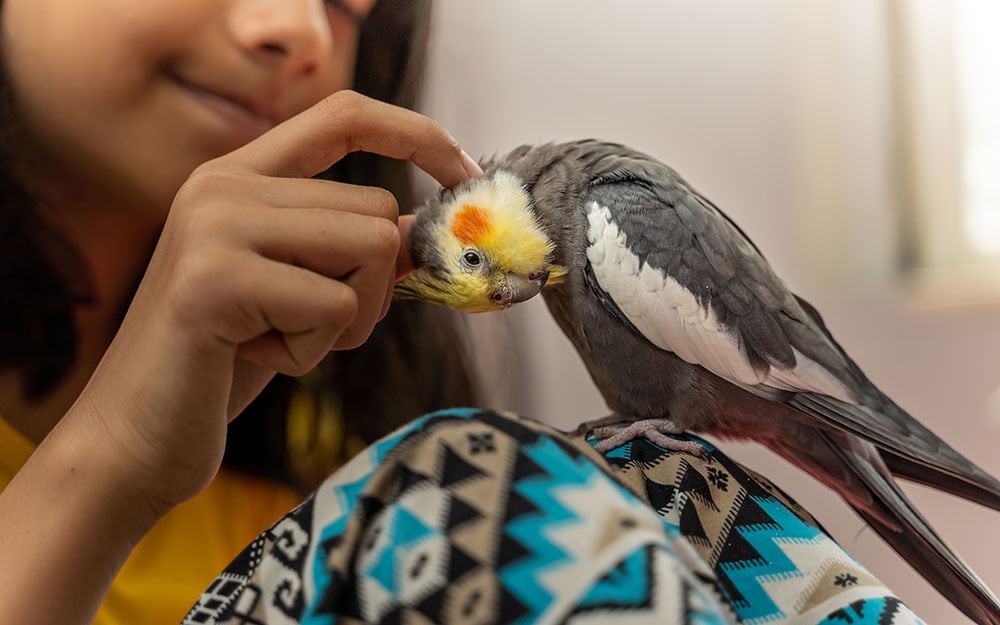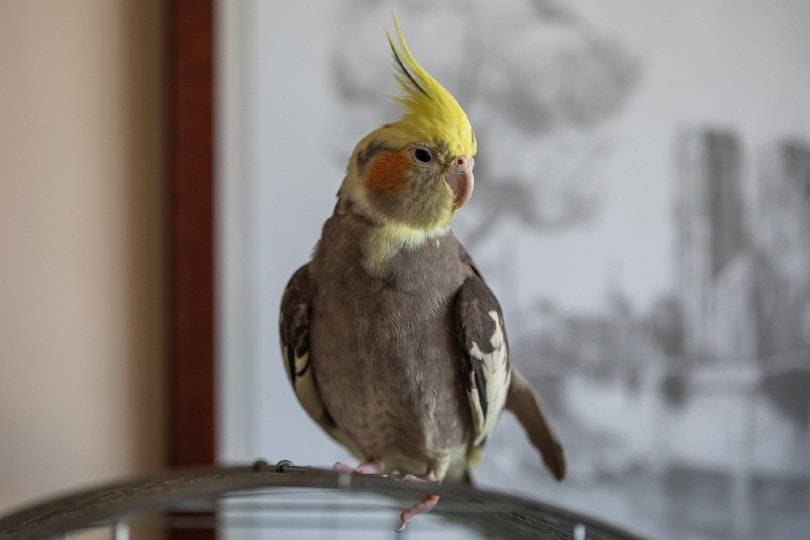How Do Cockatiels Mate? Vet Reviewed Facts & FAQ
Updated on
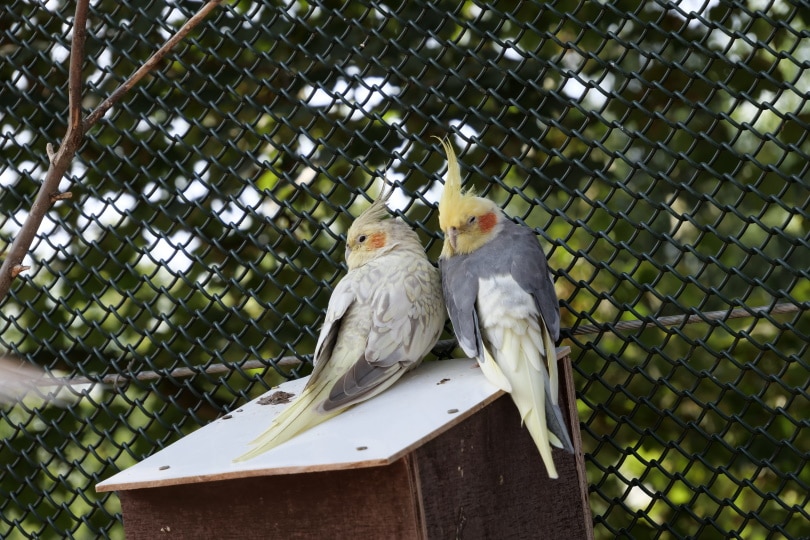
Breeding cockatiels is an involved and rather arduous process. You cannot decide to breed your cockatiels one day and expect it to happen overnight. First, the breeding pair needs to get to know one another to form a bond that makes mating possible.
Keep reading if you’ve ever been curious about how cockatiels mate and what the breeding process looks like.
How Do Cockatiels Mate?
The mating process for cockatiels is an involved one. There are two main stages to the process.
1. Bonding
Cockatiels that are strangers to each other are unlikely to mate together. They need to form complex bonds with their breeding partner. These bonds may last a lifetime and are created through behaviors such as eating and flying together, dancing, singing, and imitating one another.
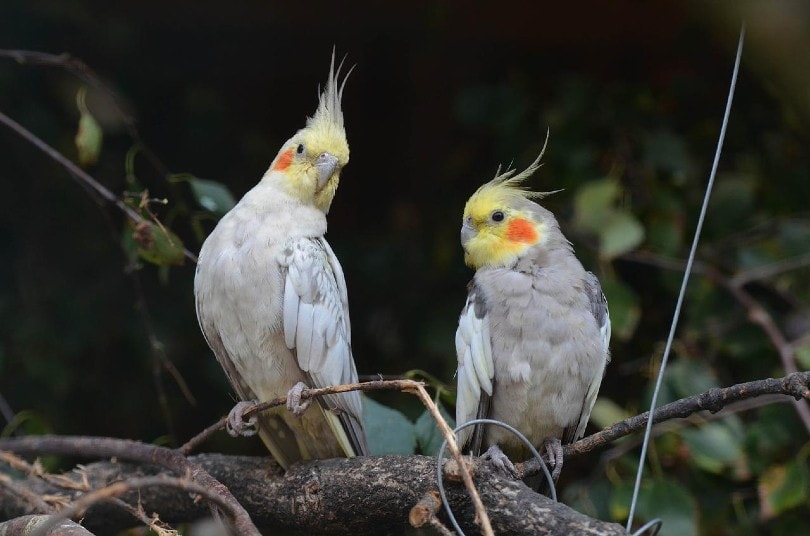
2. Getting Into Condition
When the environment is just right, cockatiels will “go into condition,” meaning they’ll become ready to breed.
It’s important to note that they do not need a mate to go into condition, as this can happen when the environmental conditions are right. They can also mate while not “in condition”, but females may not lay eggs or could lay infertile eggs.
There are several steps cockatiels will take to show they are ready to breed. First, male cockatiels will begin preparing the nest. They’ll gnaw on the nesting box opening and arrange the bedding in a way that they like. Once they’ve made the changes they feel are necessary to the nesting box, they will allow the female to enter.
Next, the breeding pair will display behaviors indicating they want to become mates. This includes touching beaks, grooming, regurgitating food, and calling each other. The males will sometimes display their feathers to woo their partners.
The Mating Process
When it’s finally time for Cockatiels to mate, the male will do a mating dance. This dance ritual involves bobbing his head, hopping around, and singing. You’ll also know that mating is near when you see the pair grooming each other often.
The act of mating occurs when the female crouches low on a perch and raises her tail feathers. The male will then approach and mount her. Then, he will stand on her back for up to a minute before flying away after the deed is done.
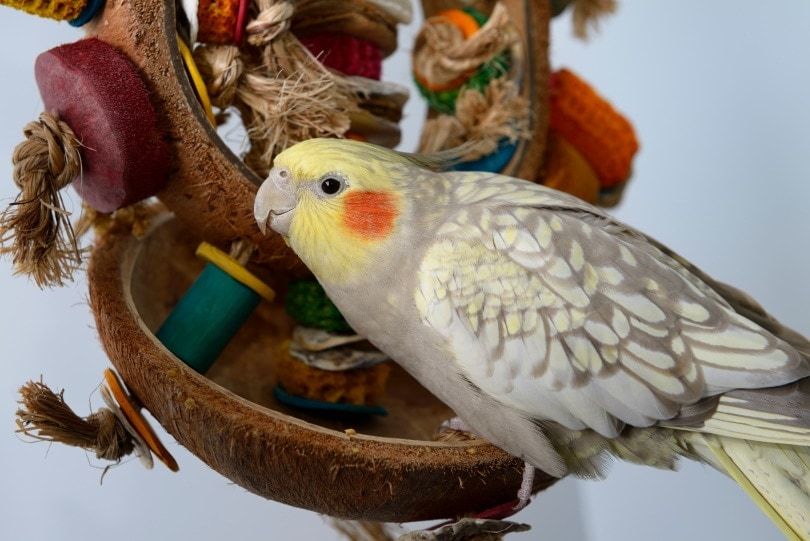
Egg Laying Post-Mating
After your birds have mated, the female will lay eggs in a week or two. The eggs typically come in clutches of four to six, with the hen producing one egg every 48 hours or so. The egg-laying process and incubation period may be longer or shorter depending on each individual bird.
Some hens will wait until all of their eggs are laid before she begins incubating, while others will start immediately after the first is laid. The male should provide the female food while protecting their nest from predators.
Once the eggs are laid, the male and female will take turns sitting on them to keep them warm. This process is known as brooding, and it is essential in ensuring that fragile eggs are kept at optimal temperatures.
Between 18 and 21 days after laying the eggs, they should begin to hatch.
How to Prepare to Breed Your Cockatiels
Now that you know how cockatiels mate, you’re probably wondering how you can start to breed yours. You need to take several important steps before jumping into it.
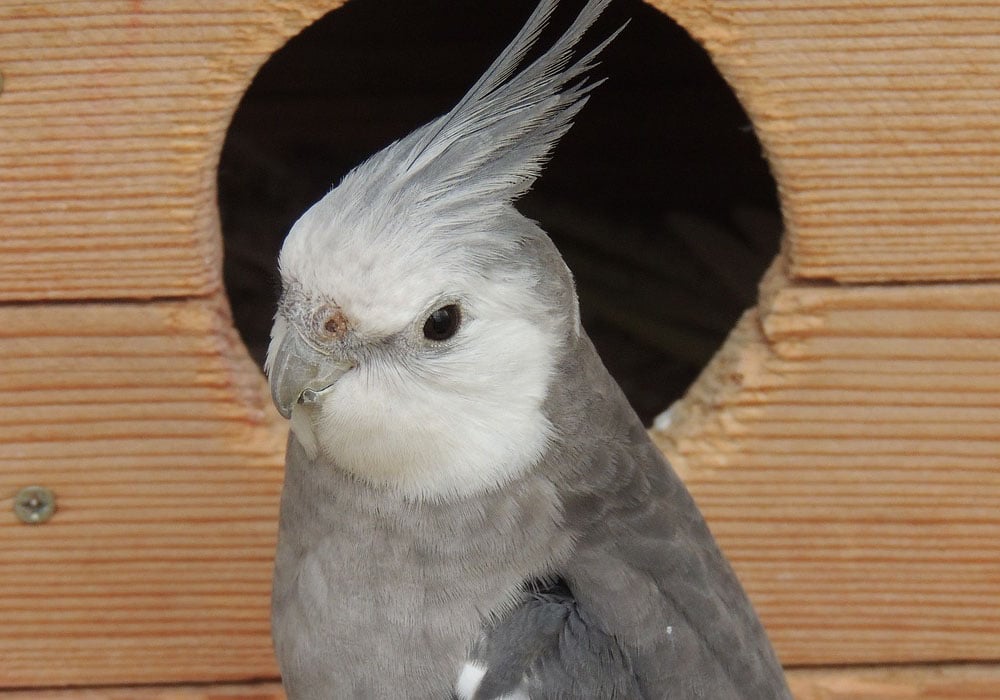
Know the Health Requirements
Before you start breeding, you need to ensure both birds are safe and healthy to breed. They should be unrelated, free of any diseases and congenital disabilities, and at the right age. It’s recommended that males be at least 18 months old and females 2 years old, though some birds are still not emotionally mature enough.
We also recommend taking your cockatiels to the avian vet for full examinations before beginning your breeding program.
Provide Plenty of Sunlight
Cockatiels can mate at any time of the year, but they tend to breed in response to the light they receive. For that reason, your birds must get at least 12 hours of artificial light daily.
Use full-spectrum lights designed to mimic natural sunlight. It would help if you also considered moving your bird’s cage to a place in your home that receives plenty of natural sunlight.
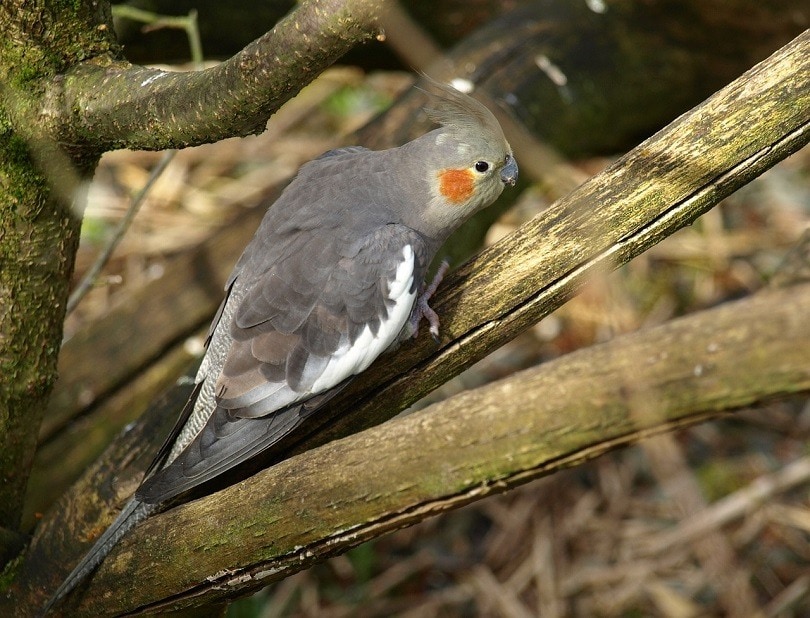
Provide a Healthy Diet
Before you consider breeding your birds, you must ensure they eat a nutritious diet. Feed them a balanced diet of food made specifically for cockatiels. This should primarily be high-quality pellets with supplementary fresh fruit, vegetables and sprouting seeds.
You might also consider adding a calcium supplement to the diet to help the hen recoup any nutrients she loses during egg laying, speak to your avian vet for advice.
Provide Plenty of Space
Your breeding pair will need plenty of space as they breed and even more once their babies have hatched. Ideally the cage should be at least 6’ x 3’ x 3’.
Put your breeding birds in their enclosure several weeks before providing a nesting box to allow them time to know one another and fall in sync for successful breeding. Put the cage in a quieter area of your home for privacy and security.
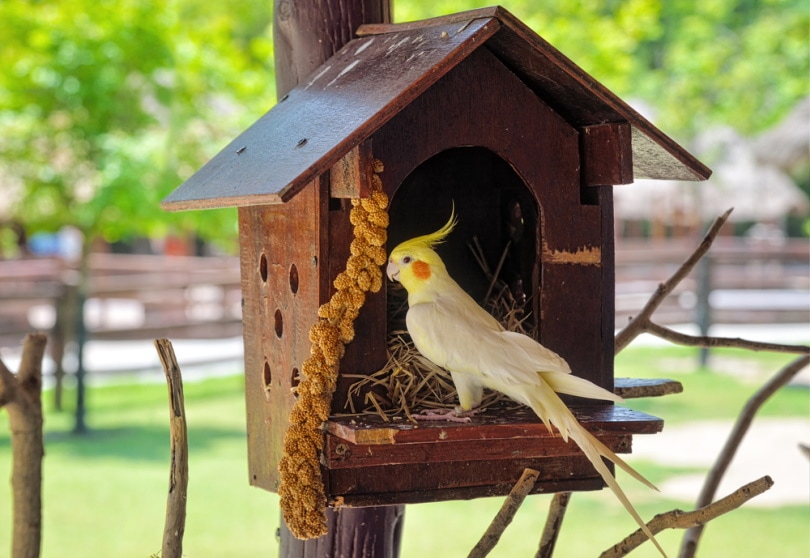
Create a Nest Box
A nest box is key for successful breeding. There are several factors to consider as you begin your search:
- Size. It must be large enough for both birds to fit comfortably. In addition, it should have an easy-to-access opening.
- Materials. Wood is typically the preferred material as it looks appealing and is easy for your birds to customize by chewing.
- Rear doors. Some nesting boxes have backdoors that allow you to keep an eye on the newly hatched chicks.
- Bedding. Pick bedding that’s not dusty to ensure the breeding pair and their babies are comfortable and safe. Paper materials such as paper towels, shredded paper, or low-dust pine wood shavings are common options.
- Placement. Once you’ve made the box, place it somewhere in the cage where it’ll be away from direct sunlight. It should be easily accessible to your breeding pair.
Final Thoughts
Breeding cockatiels is an involved process that requires time and patience. You cannot force two birds to mate, so if breeding your pets is on your agenda, you’ll need to let the cockatiels involved lead the way. Birds can take months to show interest in mating, and not every bird will be a good breeder. There are simply no guarantees when breeding birds, so patience is necessary.
Featured Image Credit: Piqsels



